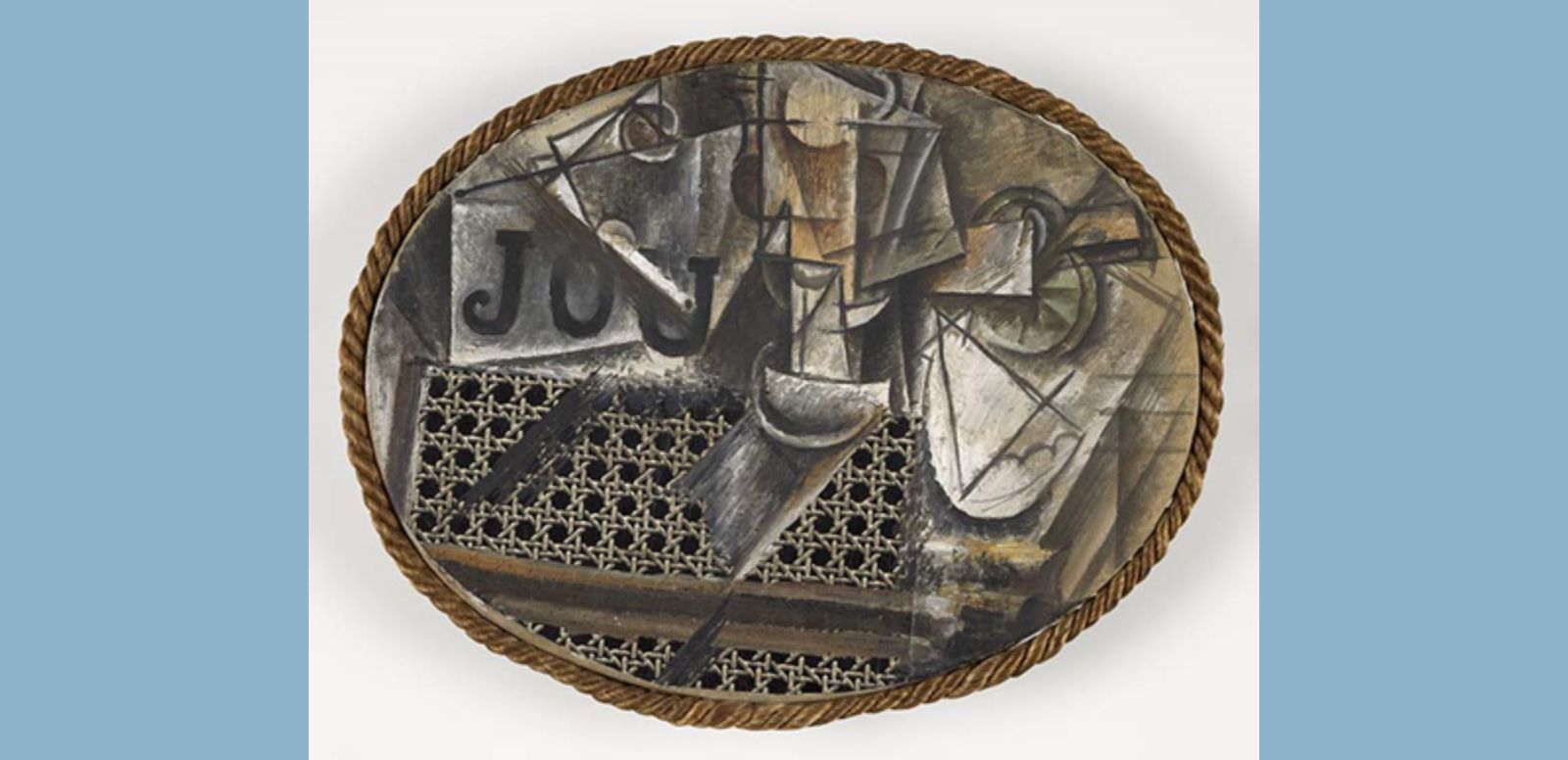
Musée national Picasso-Paris
© Sucesión Picasso, VEGAP, Madrid, 2023
The painting Still Life with a Grille Chair (1912), which Picasso never wanted to get rid of, belongs to the stage in which, together with Braque, he was exploring the possibilities of analytical cubism. The piece shows this transition from the metaphorical representation of reality, achieved by imitation through the brush, to the direct introduction of the object itself.
In addition, space is defined through multiple points of view that involve the fragmentation of objects, as can be seen in other pieces such as Still Life with a Bottle of Liquor (1909) and Ma Jolie (1911-1912).
One of the most notable features of this work is the introduction of a fragment of waxed cloth that imitates the grid of a chair. The waxed cloth introducing a play of perceptions is a kind of game that defies conventional expectations of what a painting should be.
Everyday objects -a pipe, a cup, a knife or a lemon- are represented fragmented in a disconcerting composition that manages to reproduce their essence. In addition, typographic signs are included in this piece, creating a game of equivocation with "JOU" that can refer to "journal" (newspaper) or "jouer" (game).
The palette of brown and gray tones is also characteristic of analytical cubism. This chromatic choice further emphasizes the decomposition and assembly of forms and allows for the exploration of new visual dimensions.
Sources:
Musée national-Picasso París https://www.museepicassoparis.fr/fr/nature-morte-la-chaise-cannee

